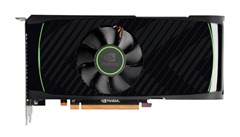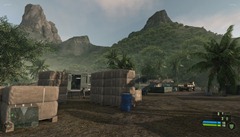According to the December 2010 Hardware and Software Survey by popular online game provider Steam, the GeForce 8800 is the most popular GeForce GPU in use today. NVIDIA launched the GeForce 8800 for Windows Vista nearly 3 years ago in support for DirectX 10. The GeForce 8800 GT was one of the most popular GPU upgrades at the time due to the performance/price ratio. The GeForce 8800 GT and its successor the 9800 (which is the second most popular GeForce GPU) have proven to be excellent GPUs. However, today NVIDIA is giving those who have these older GPUs a reason to upgrade: the GeForce GTX 560 Ti. NVIDIA’s own data shows that people tend to upgrade their GPUs every 3 years or so. And we’re just coming up on the 3 year mark since the GeForce 8800 was released so it’s the perfect time for the GTX 560 Ti to make its debut.
The GeForce GTX 560 Ti is a fantastic upgrade from the GeForce 8800 GT. Overall, the GTX 560 Ti shows a 3x performance increase over the GeForce 8800 GT. The GeForce 8800 GT had 512MB of GDDR3 memory, while the GTX 560 Ti has 1GB of GDDR5. The GTX 560 Ti also has an 822MHz graphics clock. The GTX 560 Ti is designed along the same lines as the GTX 570/580 where on a transistor level changes have been made to make it more efficient with power consumption. The basic goal for the new design NVIDIA has chosen with the GTX 500 series GPUs is to have great performance while consuming the least amount of power possible. The GTX 560 Ti is equipped with 384 CUBA Cores and 8 PolyMorph Engines. NVIDIA was able to add a lot of performance into this GPU at the same time keeping power consumption in check due to the overall design of the GPU. NVIDIA has shown in testing that the GTX 560 Ti actually delivers 21% better performance per watt than the GTX 460 (1GB) and runs 33% faster.
Gamers upgrading from the GeForce 8800 GT to the GeForce GTX 560 Ti will notice some pretty good improvements even with older games. Below is how the game Crysis looks on the GeForce 8800 GT (running at 1920×1200 and on Medium graphics settings in the game):
And this is how Crysis looks on the GeForce GTX 560 Ti (running at 1920×1200 and on Very High graphics settings in the game):
You’ll notice a lot more of the details are filled in in the game with the GTX 560 Ti. These shots were taken on the same PC where only the GeForce 8800 GT was switched out with the GTX 560 Ti to simulate a typical GPU upgrade. The GTX 560 Ti is 5 generations ahead of the GeForce 8800 GT and represents a lot of major changes including an all new architecture (Fermi) that allows for the above seen improvements.
And then of course there is DirectX 11. The GeForce GTX 560 Ti is designed to deliver the best experience in DirectX 11 games. The 8 PolyMorph Engines I mentioned above are dedicated specifically for hardware tessellation – a key feature in DirectX 11. The 8 PolyMorph Engines allow for faster geometry processing which make DirectX 11 games look amazing. DirectX 11 games such as Tom Clancy’s H.A.W.X. 2 look and perform great on a PC with a GTX 560 Ti. Specifically, the terrain looks more realistic due to the tessellation capabilities in the GPU with DirectX 11.
The price (Suggested Retail Price) for the GeForce GTX 560 Ti will be $249. What’s great about this is that it’s in line with what the GeForce 8800 GT launched with in terms of price (it launched in the $199-$249 range) in 2007. The $249 price is for the standard GTX 560 Ti with the stock 822MHz clock. However, several NVIDIA partners will be shipping overclocked versions of the GTX 560 Ti running with up to 1 GHz clocks that will run a bit higher in price at around $269.99.
I recently switched out a GeForce GTX 460 with the GTX 560 Ti in my desktop PC at home and am very pleased with the results!
For more information on the GeForce GTX 560 Ti, click here to see NVIDIA’s product page and click here for their press release.



